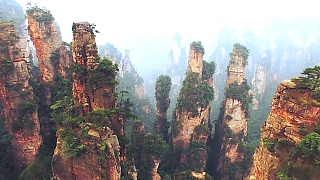Videos about scenic area, China
LuShui YunMen Scenic Area, GuiZhou province
With Beijing Old Liu ...
[video v=RgAcPM2kng4]LuShui YunMen Scenic Area visitor guide
Overview
LuShui YunMen Scenic Area, located in the picturesque GuiZhou province, is a stunning natural attraction known for its lush landscapes, serene waters, and breathtaking views. The area offers a perfect blend of natural beauty and cultural heritage, making it an ideal destination for nature lovers and cultural enthusiasts alike.
History
LuShui YunMen Scenic Area has a rich history that dates back centuries. The area has long been revered for its natural beauty and has inspired poets, artists, and travelers throughout the ages. The scenic area is also home to several historical and cultural sites that reflect the diverse heritage of GuiZhou province.
Main Attractions
YunMen Cave
YunMen Cave is one of the most famous attractions in the LuShui YunMen Scenic Area. The cave features stunning stalactites and stalagmites, creating a mesmerizing underground landscape. Visitors can explore the cave's intricate formations and enjoy the cool, serene atmosphere.
LuShui Waterfall
The LuShui Waterfall is a spectacular sight, cascading down the mountainside into a crystal-clear pool below. The waterfall is surrounded by lush vegetation, making it a perfect spot for photography and relaxation. The sound of the water and the fresh air provide a rejuvenating experience.
Mountain Trails
The scenic area boasts numerous hiking trails that offer breathtaking views of the surrounding mountains and valleys. The trails vary in difficulty, catering to both casual walkers and experienced hikers. Along the way, visitors can encounter diverse flora and fauna, adding to the adventure.
Local Villages
The scenic area is home to several traditional villages where visitors can experience the rich cultural heritage of the local ethnic communities. These villages offer a glimpse into the traditional lifestyle, architecture, and customs of the people who have lived in harmony with nature for generations.
Culture and Traditions
LuShui YunMen Scenic Area is not only known for its natural beauty but also for its vibrant cultural heritage. The area is inhabited by various ethnic groups, each with its unique traditions, festivals, and crafts. Visitors can witness traditional dances, music, and local crafts that reflect the cultural richness of the region.
Activities and Experiences
Hiking and Nature Walks
Explore the scenic beauty of LuShui YunMen by embarking on one of the many hiking and nature trails. These trails offer a chance to connect with nature, enjoy panoramic views, and discover hidden gems along the way.
Photography
The scenic area is a paradise for photographers, with its stunning landscapes, vibrant flora, and serene waters. Whether you're a professional photographer or an amateur enthusiast, you'll find plenty of opportunities to capture the natural beauty of LuShui YunMen.
Cultural Tours
Join a guided cultural tour to learn more about the local traditions, history, and lifestyle of the ethnic communities in the area. These tours provide valuable insights and a deeper understanding of the cultural heritage of LuShui YunMen.
Accommodation
LuShui YunMen Scenic Area offers a range of accommodation options to suit different preferences and budgets. Visitors can choose from luxury resorts, cozy guesthouses, and traditional homestays. Staying in a local guesthouse or homestay provides an authentic experience and a chance to interact with the local community.
Travel Tips
- Best Time to Visit: The best time to visit LuShui YunMen Scenic Area is during spring (March to May) and autumn (September to November) when the weather is mild and the scenery is at its most beautiful.
- Getting There: LuShui YunMen Scenic Area is accessible by bus or car from GuiZhou's major cities. The nearest airport is GuiYang LongDongBao International Airport, which offers connections to various domestic and international destinations.
- Opening Hours: The scenic area is open daily from 8:00 AM to 5:00 PM.
- Entrance Fees: There is an entrance fee for the scenic area, with additional fees for specific attractions and activities. It is advisable to check the latest fees before planning your visit.
- Dress Comfortably: Wear comfortable clothing and sturdy walking shoes, as the terrain can be uneven and the weather can change quickly.
- Respect Local Customs: Be respectful of local customs and traditions, especially when visiting villages and cultural sites. Always ask for permission before taking photos of people.
- Stay Hydrated: Carry plenty of water, especially if you plan on hiking or spending extended periods outdoors. It's also a good idea to bring snacks or a packed lunch for longer excursions.
MangShan WuZhiFeng Scenic Area, HuNan province
With Beijing Old Liu ...
[video v=Mq-NTcVQ_CM] Plus more videos ...
Beautiful scenic areas in GuiZhou province
Bonus films - WuJiang Village ...
Plus more videos ...
WanFeng Forest Scenic Area, GuiZhou
With LiangPei Vision ...
[video v=4iCJjUA6BXQ] Plus more videos ...
ZhangJiaJie, WuLing scenic area / national park, HuNan province
With Little Chinese Everywhere ...
[video v=Na3ToBLUfFk]Amazing infrastructure in HuNan province ...
Plus more videos ...
TianHe Lake scenic area, GuiZhou
XingYi, scenic area, GuiZhou
YouShanHe Scenic Area, in beautiful GuiZhou
Plus - TianHe Lake ...
Plus more videos ...
GeTu River scenic area, GuiZhou
With BeiJing Liu ...
[video v=4H-x454r3fI]ZhangJiaJie 张家界 and TianMenShan 天门山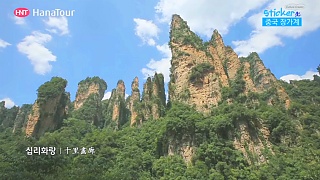
WuLingYuan Scenic Area, HuNan province. A great film by Sticker Travel ...
Beautiful HuangLong 黃龍 Scenic Area, SiChuan province
HuangLong ('Yellow Dragon' - the appearance of the pools along HuangLong Valley) lies 150 kilometers (93 miles) north-northwest of the provincial capital ChengDu. All in all, it covers an area of almost 2,000 square kilometers. This area is known for its colorful pools formed by calcite deposits, as well as diverse forest eco-systems, snow-capped mountain peaks, waterfalls and hot springs. There are also a number of temples. HuangLong is also home to the Giant Panda.
The temples and natural landscape around Mount EMei 峨嵋山 and LeShan Giant Buddha 乐山大佛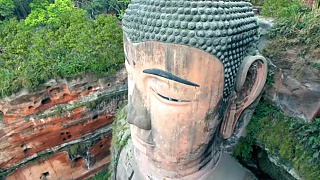
A beautiful film of the scenic area around ÉMéiShān and LèShān Dàfó, SìChuān province. Mount EMei is one of the Four Sacred Buddhist Mountains of China on which there are nearly 70 Buddhist monasteries. At 71 meters (233 feet) in height, LeShan Giant Buddha is the largest stone Buddha in the world.
LeShan Giant Buddha 乐山大佛, Mount Emei 峨眉山 Scenic Area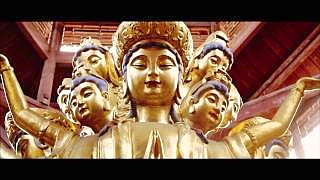
The LeShan Giant Buddha 乐山大佛 is located in SiChuan province and is a 233 foot tall stone statue constructed during the Tang Dynasty. Emei Shan (3,100 meters / 10,200 feet) is one of the four Chinese Buddhist sacred mountains. Emei Shan is UNESCO World Heritage Site (together with the Leshan Giant Buddha) : "...an area of exceptional cultural significance as it is the place where Buddhism first became established on Chinese territory... The first Buddhist temple in China was built on the summit of Mount Emei in the 1st century CE." Documentaries ...
YeSanPo 野三坡 National Park, HeBei province
YeSanPo National Park is located about 2 hours west of BeiJing. YeSanPo consists of six main scenic areas, including the BaiLiXia Gorge ('Hundred Li Gorge'), which is about 30 miles long.
YaNoDa 呀诺达 RainForest Park Scenic Area, HaiNan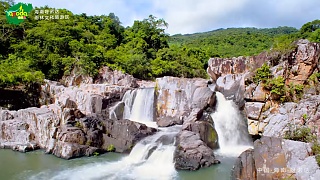
The YaNoDa RainForest Park Scenic Area is located 35 kilometers from SanYa, HaiNan Island, south China ...
HaoHe River Scenic Area, NanTong 南通
JiangSu province, east China.
LeShan Giant Buddha 乐山大佛 scenic area, SiChuan province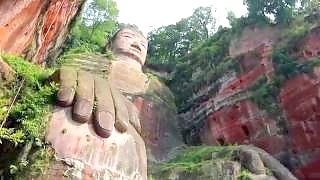
The Giant Buddha, which is around 70 meters in height, was carved out from the hill during the Tang dynasty (618–907). It took 90 years to complete. The LeShan Giant Buddha is part of the Mount Emei Scenic Area, which is a UNESCO World Heritage Site. This area has exceptionally diverse vegetation, ranging from subtropical to sub-alpine pine forests. Over time, additional temples established nearby making this an important place in Buddhism. There is a lot to see and explore. Slideshow (with some great photos) :
The awesomely beautiful HuangShan 黄山 National Park and Nature Reserve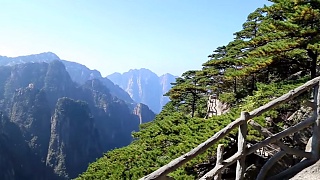
Join us for a hike through the amazing peaks and valleys of HuangShan (Yellow Mountain) Scenic Area in AnHui province, east China ...
The beautiful JinSi Xia 金丝峡 scenic area, ShaanXi province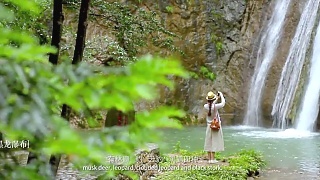
A trip to the wonderful, natural getaway of JinSi Xia (JinSi Canyon), ShaanXi province in central China ...
FengHuang 凤凰 ancient town, and ZhangJiaJie 张家界 national forest park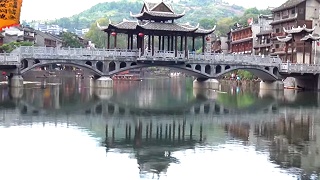
HuNan province. FengHuang is an ancient water town based on a river. The WuLingYuan scenic area within ZhangJiaJie is also a nature reserve. Both are UNESCO World Heritage Sites.
Beautiful JiuZhaiGou 九寨沟 in SiChuan province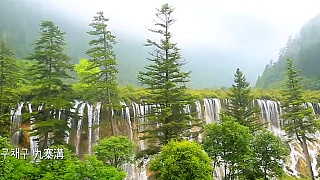
JiuZhaiGou ('Nine Villages Valley') in south west China is a UNESCO World Heritage site, nature reserve and scenic area. A great film by Sticker Travel ...
ZhangJiaJie National Forest is part of the WuLingYuan Scenic Area in Hunan province.
A trip to GuangXi 广西 and SiChuan 四川 provinces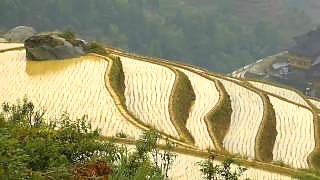
Two films by ryzdon - LongSheng (Dragon's Backbone) Rice Terraces, GuangXi province, and LeShan Giant Buddha, Mount Emei Scenic Area, SiChuan province ...
The LeShan Giant Buddha 乐山大佛 Scenic Area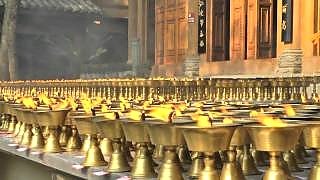
The Giant Buddha is located at the confluence of three rivers, near LeShan city in SiChuan province. The film also has scenes from nearby countryside and temples. A beautiful video ...
Part of the WuLingYuan Scenic Area in Hunan province. WuLingYuan National Park 中国世界自然遗产 武陵源 张家界 is a spectacular area stretching over more than 26,000 hectares. The park is dominated by more than 3,000 narrow sandstone pillars and peaks, many over 200 meters high. Between the peaks lie ravines and gorges with streams, pools and waterfalls, about 40 caves, and two large natural bridges. In addition to the striking beauty of the landscape, the region is also noted for the fact that it is home to a number of endangered plant and animal species.
Mount EMei 峨眉山 scenic area, including the LeShan giant Buddha 乐山大佛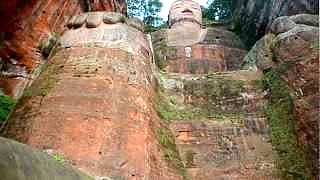
A UNESCO World Heritage site. The first Buddhist temple in China was built here in SiChuan province during the 1st century A.D. in the beautiful surroundings of the Mount Emei and in view of its peak. Over the centuries, the addition of other temples turned the area into one of Buddhism's holiest. The most remarkable - the Giant Buddha at LeShan - was carved out of a hillside in the 8th century and looks down on the confluence of three rivers. At 71 meters in height, it is the largest Buddha in the world.
A trip to ZhangJiaJie 张家界, HuNan province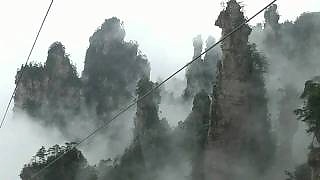
A beautiful National Forest park and renowned scenic area. Includes the world's longest cable car ride (7 km), up through the clouds ...
LongQing Xia 龙庆峡 (Great Dragon Gorge) near Beijing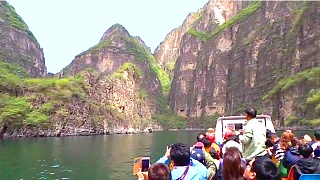
The beautiful LongQing Xia Scenic Area is located 90 kilometers (55 miles) north-west of Beijing. A great day trip from the city. Besides boating, there are also hiking trails, bungee jumping and zip lines.
JiuXiang Caves Scenic Area 九乡风景区, YunNan province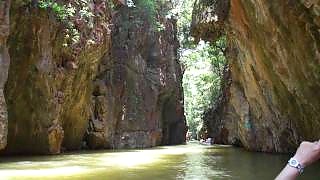
JiuXiang Scenic Area lies about 70 kilometres from KunMing and 47 km from the town of YiLiang. In JiuXiang, rivers and streams criss-cross karst hills and mountains. There are more than one hundred caves here that form one of the largest cave groups in China. The stalactites in the caves take on many forms in different colours. Found in the caves are numerous natural bridges, valleys, steams and waterfalls, which constitute a wonderful subterranean world. With a total area of about 200 square kilometres, JiuXiang consists of five smaller scenic areas.
ZhangJiaJie 展佳姐 Nature Reserve, HuNan province - video
Explore this beautiful scenic area with CCTV's Travelogue ...
The Stone Forest (ShiLin 石林) in YunNan province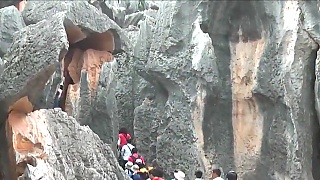
An area of extraordinary karst peaks. 120 kilometers from KunMing. A UNESCO World Heritage site. This Scenic Area comprises 350 square kilometers and is divided into a number of zones.
The beautiful HuangGuoShu Waterfall 黄果树瀑布 scenic area - video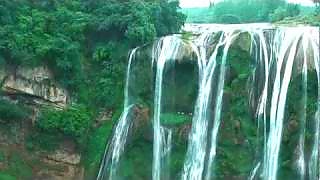
In GuiZhou province.
Driving up TianMen Mountain 天門山, HuNan province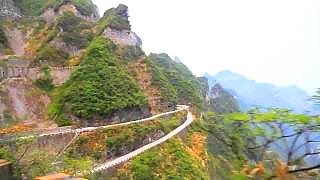
A picturesque ascent. Part of the ZhangJiaJie scenic area.
The beautiful HuangLong 黄龍 Scenic Area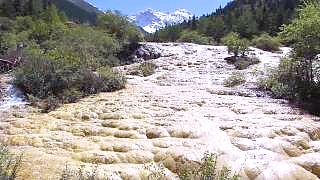
A UNESCO World Heritage Site. HuangLong Scenic Area lies in SiChuan province, about 150km north west from the provincial capital ChengDu. It is famed for its colorful pools formed by mineral deposits, and there are also rich forests full of wildlife, including the Giant Panda, snow-capped peaks, waterfalls and hot springs.
XiaoQiKong 小七孔 Scenic Area, GuiZhou province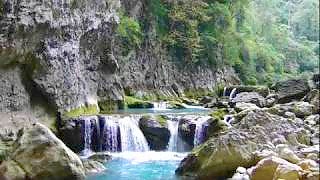
"Seven small arches" ...
The wonderful waterfalls of JiuZhaiGou 九寨沟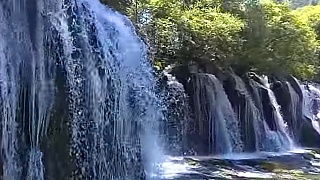
A scenic area / nature reserve in SiChuan province. Also, a UNESCO World Heritage Site.
The JiuLong 九龙 Waterfalls Scenic Area, YunNan 云南 province
The Nine Dragon Waterfalls, LuoPing County, YunNan province. The succession of water falls, some gentle and some powerful, are set in a landscape of patchwork fields and mountains. The grandest has a water drop of 56 meters and is 110 meters wide.
The Three Natural Bridges 天生三桥 of WuLong County, ChongQing
A great day out in splendid scenery ... Part of the movie Curse of the Golden Flower was filmed here. The scenic area is about two and a half hours from the city of ChongQing by bus and is a UNESCO World Heritage Site.
ShaoGuan Canyon 韶关峡, DanXia in GuangDong province - video
Beautiful scenery ... DanXia National Park scenic area has many sandstone hills that have over time been eroded to unusual shapes. With CCTV's Travelogue ...
WuLingYuan 武陵源 Scenic Area, HuNan province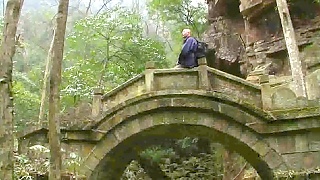
Near the city of ZhangJiaJie in central/south China Filmed in January 2010.

